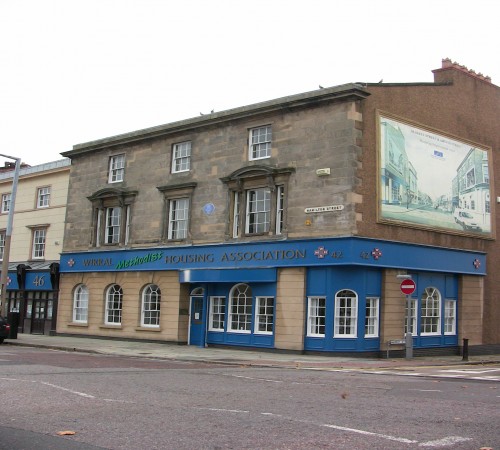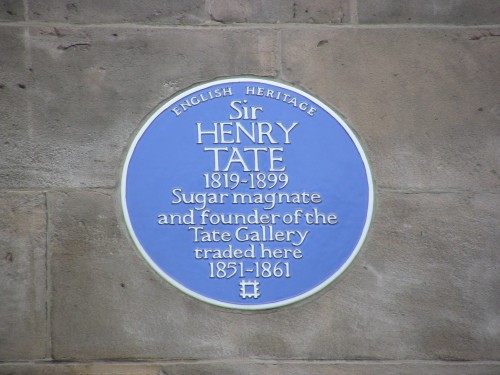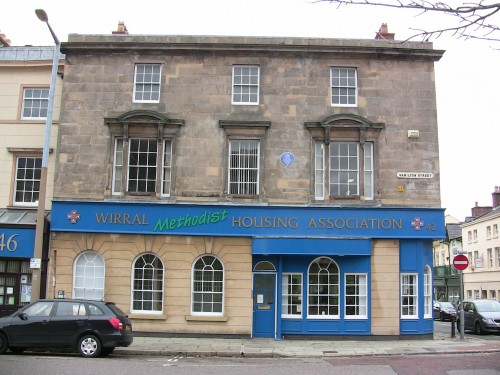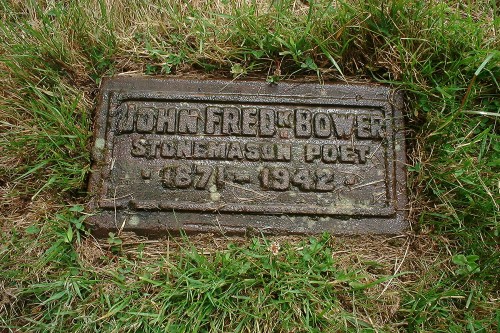Love Lane Lives
The history of sugar in Liverpool and the effects of the closure of the Tate & Lyle sugar refinery, Love Lane
Time for a Blue Plaque for Tate Liverpool!
Written by Ron Noon at 17:54 on Monday, December 06th 2010
WE NEED A BLUE PLAQUE LIKE THEY’VE GOT OVER IN BIRKENHEAD!
.........................................................................................................................................................................................................................................................................................................................................................................................................................................................
“On Friday 26th November 2010 The Liverpool Echo contained this report: “TATE & LYLE is to end its 150-year presence in Liverpool after agreeing to sell its molasses operation. Northern Ireland-based grain trader W & R Barnett will pay £67m for the business, in a deal which will see the 50 employees based at Regent Road, Bootle, and Birkenhead’s North Alfred Dock transfer over.” I asked myself what will there be left to “commemorate” Tate’s Grieving of Liverpool and the answer was/is obvious! We may need the help of the Liverpool Pilot to achieve an ambitious but achievable goal for 2011”
I’ve started off this blog with a question and answer and very little context! Here’s the fuller version of what was written in the Liverpool Echo at the end of last month.
“TATE & LYLE is to end its 150-year presence in Liverpool after agreeing to sell its molasses operation. Northern Ireland-based grain trader W & R Barnett will pay £67m for the business, in a deal which will see the 50 employees based at Regent Road, Bootle, and Birkenhead’s North Alfred Dock transfer over.
The proceeds from the sale will be used to reduce Tate & Lyle’s net debt. Completion is conditional on employee consultation but is expected to occur in the next few weeks. That will be the last of Tate & Lyle’s operations in Merseyside, which has been closely associated with the company since Liverpool shop owner Henry Tate made his first venture into sugar cane refining in 1859. Later he set up Henry Tate & Sons and the Love Lane Refinery in Liverpool was opened in 1872. A century later, it closed with the loss of 1,570 jobs, followed by a syrup making plant in Bootle which shut in 1984. The molasses division also has its roots in Liverpool. A Liverpool-based cattle feed importer, Marquis, was founded in 1910 and soon began importing molasses – an ingredient used in cattle feed. The company moved to London in 1925 and became United Molasses before it sold its Liverpool refinery to Tate & Lyle in 1937. The sugar giant bought the entire company in 1963. In the year to March, the molasses operations had external sales of £228m and made an operating profit of £13m in the year to March, and had gross assets of £81m at that date.Tate & Lyle announced in July its intention to find a buyer for the remaining businesses within its sugars division. Tate & Lyle chief executive Javed Ahmed said: “Tate & Lyle’s clear priority is to grow its speciality food ingredients business, supported by cash generated from bulk ingredients.”
Those of you who have read the recent blog on United Molasses and “Rumbullion” will realise that the ECHO is guilty of a few errors including what we in the history trade label “chronological inexactitude”! That’s a long winded way of saying that facts are sacred and opinion is free and that reporters need to do their homework and quote accurate dates! Not only is the full name of the cattle feed importers shortchanged, (it was Marquis,Clayton), but Michael Kroyer Kielberg the “Liverpool Dane” I referred to in a recent blog, went to work at their office in 4 Chapel Street in 1907! In June1938 (not 1937 as quoted in the Echo report) Kielberg who was “Mr UM” and a director of Tate & Lyle (one of the first along with Lord Birkenhead from outside the Tate & Lyle families) sold Macfie and Sons which UM had acquired in 1936, to Tates. “The Macfie factory was closed and its capacity…was transferred to Love Lane”. Phillipe Chalmin
Given that context and background, who can claim that this final leaving of Liverpool has come out of the blue?, After the July 1st announcement that the company bearing the name of the “Sugar Magnate” on the blue plaque in Hamilton Street Birkenhead was selling its European sugar business to the American Refining Company, this latest announcement was sadly all too predictable. As an inveterate sugar buster I noted this Reuter source on 23rd of August 2010
“UK based Tate & Lyle would sell its stake in the Nghe An Tate & Lyle Sugar Company in Vietnam’s central region, ending its 14 year presence in Vietnam, a company representative told Planning and Investment Minister Vo Hung Phuc last week. Tate & Lyle is a global provider of distinctive, high quality ingredients and solutions to the food, beverage and other industries.”
That reference to global provider contains no reference whatsoever to sugar, and so molasses was clearly next in line! Phillipe Chalmin’s excellent book on THE MAKING OF A SUGAR GIANT: TATE & LYLE 1859-1989 is now decidedly historical. The company logo of Tate & Lyle is now blatlantly ANACHRONISTIC and past it’s sell by date in terms of its business links with the city of Liverpool. A more appropriate title for a new edition would be THE UNMAKING OF A SUGAR GIANT! That said Henry Tate the former grocer who became not ony a Sugar Magnate but Britain’s Rockefella (money made from white not black gold) is at the moment only commemorated Blue Plaque style in Birkenhead! He deserves commemorating over here on our side of the river as today’s Daily Post and Echo in their letters columns made clear:
Letters to the Editor
Daily Post letters
Dec 6 2010 Liverpool Daily Post
Time for a blue plaque for Tate
THERE is an English Heritage blue plaque on the front of 42, Hamilton Street, Birkenhead, home of the Wirral Methodist Housing Association, which reads “Sir Henry Tate 1819 to 1889, Sugar Magnate and founder of the Tate Gallery traded here 1851-1861”.
His first trading experiences were, of course, in groceries and the fine building just off Hamilton Square (said to be second only to Trafalgar Square for the most Grade I listed buildings in one place in England), although fitting testimony to those early successes, is on the wrong side of the river, to record and reflect the subsequent achievements of a global sugar dynasty that was made in Love Lane, Liverpool!
In the wake of Tate’s decision to end its molasses operations on Merseyside, following on the July announcement to sell off all of its sugar business, what is the equivalent to blue plaque status on my side of the river?
Love Lane Lives and the reminiscences of the boys and girls from the white stuff live on in the form of films and recorded interviews on my website of that name, (www. lovelanelives.com) but surely there is now an even more pressing case to have a Blue plaque, and perhaps a community based museum, on the site of the former “Sugarland” which, although devastated by the 1981 closure, has phoenix- like risen from that waste and dereliction to become a permanent reminder that community is defined and lived by people not politicians and businessmen.
If we had some ghostly interviewing techniques available, I think ’Enery would go along with that sentiment and our Blue Plaque campaign.
Ron Noon
..................................................
Echo Letters
Liverpool Echo letters, December 6 2010
Dec 6 2010 Liverpool Echo
THERE is an English Heritage blue plaque on the front of 42 Hamilton Street Birkenhead, home of the Wirral Methodist Housing Association, which reads ‘’Sir Henry Tate 1819 to 1889, Sugar Magnate and founder of the Tate Gallery traded here 1851-1861’’.
His first trading experiences were of course in groceries and the fine building just off Hamilton Square, (said to be second only to Trafalgar Square for the most Grade I-listed buildings in one place in England),
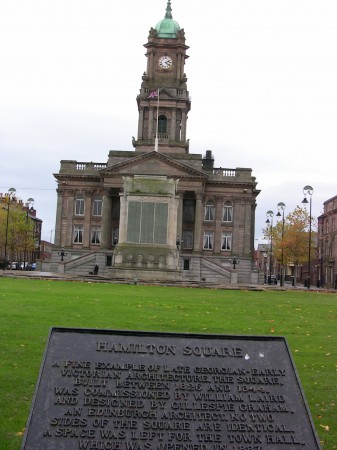
although fitting testimony to those early successes, is on the wrong side of the river, to record and reflect the subsequent achievements of a global sugar dynasty that was made in the more romantically named Love Lane Liverpool!..............
So to conclude a hastily compiled blog, the agenda for 2011 is to work with Tony McGann and the Eldonians to ensure that on the site that so many girls and boys from the whitestuff dedicated their working lives, a blue plaque is a major priority for 2011.
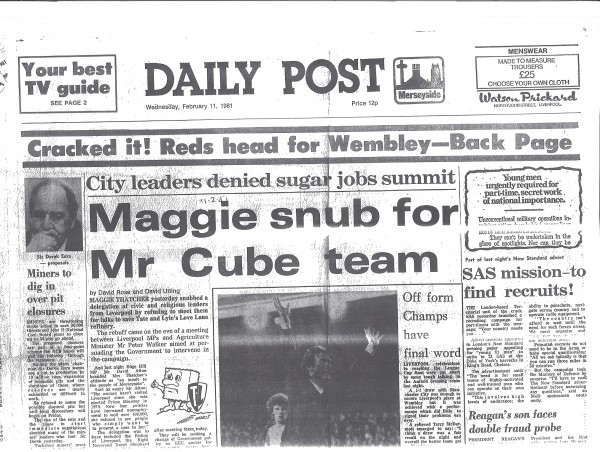
..............................................................................................................
APPENDIX TO DECEMBER 6TH 2010
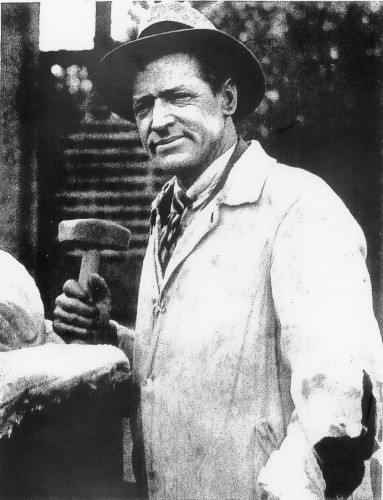
The guy above was one of the first stonemason’s to work on the Liverpool Anglican cathedral site and his autobiography ROLLING STONEMASON, published in 1936 contained a chapter entitled THE SECRET IN THE STONE. It ought to outsell Harry Potter but in 2011 the book could be re-published. I went over to Heswall today to place some red roses on his PLAQUE which is in the cemetry of St Peter’s Church opposite the BLACK HORSE public house.
Fred was born in Boston Massachusetts on December 6th 1871 but reared in Liverpool. I placed this “dust jacket” account of ROLLING STONEMASON: AN AUTOBIOGRAPHY alongside the flowers on Fred’s stone. Happy 139th birthday Fred.
“Among the sand dunes of the Wirral Peninsula, overlooking the estuary of the Dee, Mr Fred Bower lives in a hut he built with his own hands. He is well known at the local pub, and in some of the near-by villas, where the small children of Liverpool business-men look to him to play games, to write verses, and to carve gnomes and squirrels and fairies for them. But Mr Bower has a full, adventurous life to look back upon and he has written it in his own vivid and racy idiom. He comes from a family of hereditary stonemasons in Dorset, and though he was born in America and brought up in Liverpool he has practiced the stonemason’s craft in three continents, and combined it with such diverse activities as prospecting for gold, and working for the Labour Movement. The story of his life is the story of an ancient craft adapted to modern urban circumstances, and it is closely interwoven with the early years of Tom Mann, Jim Larkin, Philip Snowden and many other notabilities. He has been a prospective candidate for Parliament and worked as a fireman on a tramp steamer, he can tell you all about that dreadful pre-war ‘bloody Sunday’ in Liverpool, and all about the secret message to posterity which he buried in the foundations of Liverpool Cathedral. This is an autobiography as rich in character as the man himself.”
